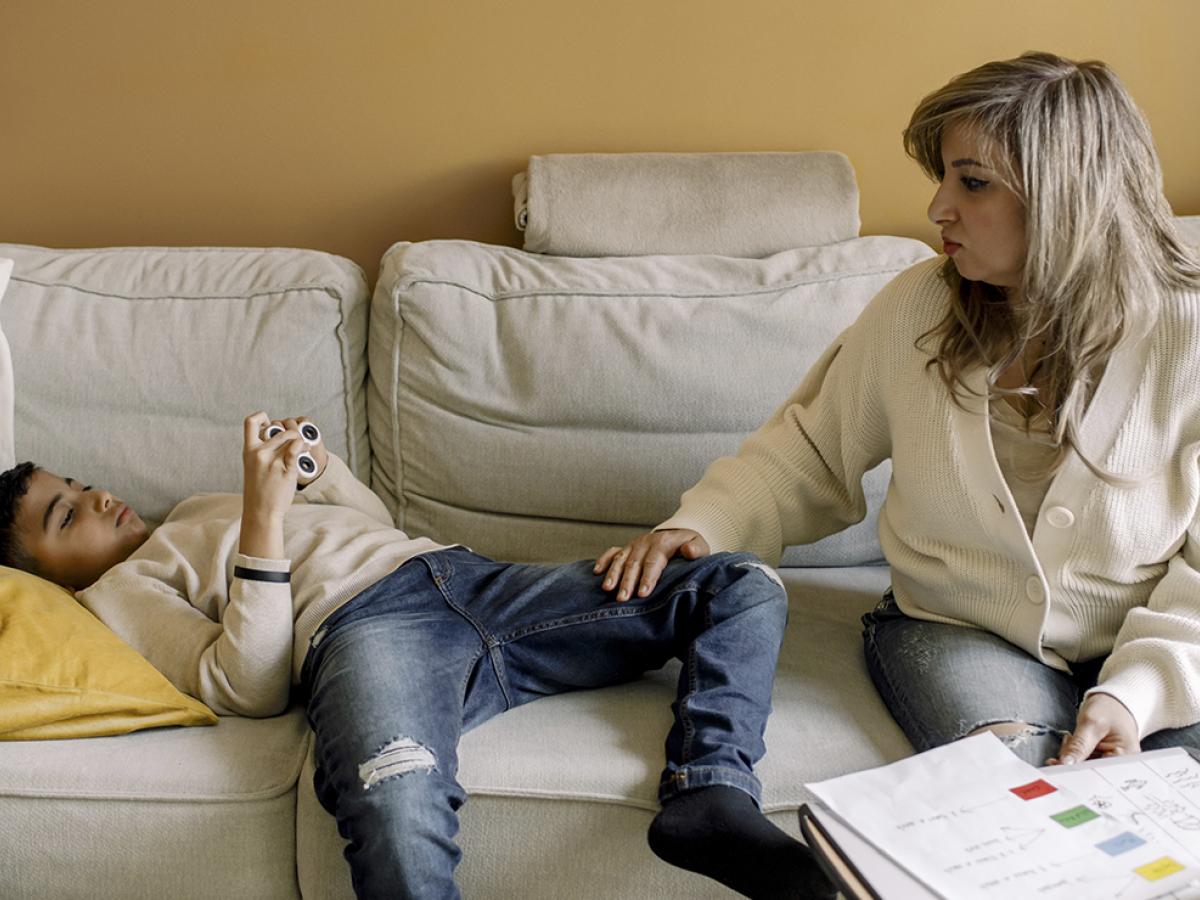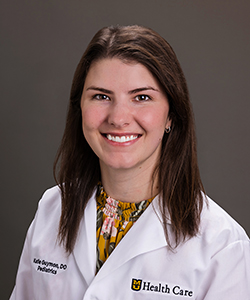February 26, 2024

No child is always calm when they should be or remembers to take out the trash every time. But when a kid is often forgetful or overly emotional, could they have attention-deficit/hyperactivity disorder (ADHD)? Or is it simply your kid being a kid?

“Whenever you have nagging concerns about your child’s behavior, it’s always appropriate to bring those concerns to your doctor,” says Dr. Kathryn Guymon, an MU Health Care pediatrician. “It can be hard to know that what you’re seeing are symptoms of ADHD, especially if you’ve lived with that level of forgetfulness or hyperactivity for years.”
The challenging part about ADHD is that the symptoms exist on a spectrum, like autism and other neurodevelopmental disorders. ADHD doesn’t look the same in every kid. But the more you know about the disorder, the better equipped you’ll be to detect the signs in your child.
Dr. Guymon shares five things you may not know about ADHD but should:
1. Not Everyone With ADHD Is Hyper All the Time
When most people think of ADHD, they think “hyperactive” — it’s in the name, after all. But not all people with ADHD have hyperactivity or impulsivity.
There are three types of ADHD:
- Predominantly hyperactive/impulsive: Someone with this type of ADHD may constantly fidget or squirm, finding it hard to sit still for long. They may also be impulsive, interrupting others and struggling to wait their turn.
- Predominantly inattentive (formally known as ADD): Children with inattentive ADHD are easily distracted and may have difficulty following instructions, remembering details or completing tasks without making careless mistakes. They also may lose things often.
- Combined inattentive/hyperactive: Some people meet the criteria with substantial symptoms of both inattentive and hyperactive types. But combined type ADHD is not necessarily a more severe diagnosis.
Children with hyperactive or inattentive ADHD often also have some symptoms of the other type. It’s not uncommon for your impulsive kid to get easily distracted or lose a school folder. An inattentive child may interrupt when others speak since they aren’t listening to the conversation.
“Most parents tend to be more aware of the hyperactive symptoms,” Dr. Guymon says. “The inattentive type is harder to pinpoint because the signs are more subtle. For example, your child may not be able to complete a task when you give a set of directions. They can only do the first thing and then come back and ask you, ‘What did you tell me to do next?’”
2. Kids With ADHD Have Frequent Symptoms for Six Months and in More Than One Setting
An ADHD diagnosis requires six or more symptoms to be happening often and for at least six months. The behavior should stand out as being inappropriate or disruptive for that child’s developmental level. But your child also must display these symptoms in more than one place. For instance, if your child is hyper and doesn’t behave at home but behaves at school, grandma’s and church, it’s likely not ADHD.
On the other hand, teachers can sometimes notice ADHD symptoms even though you haven’t seen signs at home. For many children, school is the first time they are expected to focus and stay in their seats for long periods. Only 2% of children 5 and younger have an ADHD diagnosis. By the teen years, that number jumps to 13%.
“There is a reason why ADHD diagnoses often don't get made until kids are school age,” Dr. Guymon says. “As kids gain more responsibility and more is expected of them as they enter school, those symptoms become more apparent.”
If your child’s teachers are the first to notice symptoms of ADHD, reflect on whether you’ve been subconsciously compensating for your child’s symptoms at home. Do you remove all noise and distractions during homework time? Do you pack your child’s school or sports bag so they don’t forget anything? Recognizing that your child may also show signs of ADHD at home opens the possibility of a diagnosis.
3. Some Kids Mask the Symptoms of ADHD
The prevalence of ADHD in adults is rising — doubling between 2007 and 2016. But it’s not because adults are suddenly developing the disorder. It’s because many adults compensated for their deficit when they were younger and didn’t show outward signs of ADHD.
“If your child hasn’t shown signs of struggling in school, they may have just been good at masking or compensating for their symptoms, especially if they have ADHD inattentive type,” Dr. Guymon says. Their teacher may not have noticed the symptoms you see at home, she adds, but it doesn’t mean your child isn’t struggling or working twice as hard as everyone around them.
If you suspect your kid may be compensating for ADHD, take note of how long it takes them to complete school tasks. Mention your concerns to the teacher. Often, kids can only compensate for so long before it becomes unmanageable.
4. Kids With ADHD May Be Emotional or Anxious
Some kids are naturally more emotional than others. But if your child’s emotional outbursts and anxiety don’t seem typical of other children their age, it could be a sign of an ADHD-associated disorder. About 40% of children with ADHD also have oppositional defiance disorder (ODD). Around 30% of kids with ADHD have anxiety.
These conditions are not the same as ADHD, but their symptoms can overlap. Symptoms of one condition may trigger another. The anger and aggressiveness of ODD can stem from frustration associated with undiagnosed ADHD. When a child gets in trouble in class for fidgeting beyond their control, they may develop stress and anxiety about going to school.
“Our standardized ADHD questionnaire assesses different signs and symptoms of ADHD. There are some questions focusing on inattention and others on hyperactivity,” Dr. Guymon says. “But there are also questions that touch upon symptoms of co-occurring diagnoses, like oppositional defiant disorder and anxiety.”
5. Medicine Isn’t the Only Way to Treat ADHD Symptoms
It’s common for parents to put off an ADHD assessment because they are concerned about medicating their child. But medication isn’t the only treatment option, and it’s rarely the first line of treatment for kids younger than school age.
Tell your doctor your concerns, and they’ll work with you to develop a long-term treatment plan. Depending on your child’s age, that plan may include:
- Behavior therapy
- Interventions at school
- Medication
- Organizational skills training
- Parental training in behavior management
“The important thing is to get a diagnosis if your child has ADHD,” Dr. Guymon says. “It opens opportunities to help your child. It allows the school system to make necessary accommodations for your child.”
Next Steps and Useful Resources
- Want to discuss more with a pediatrician? Find one today.


